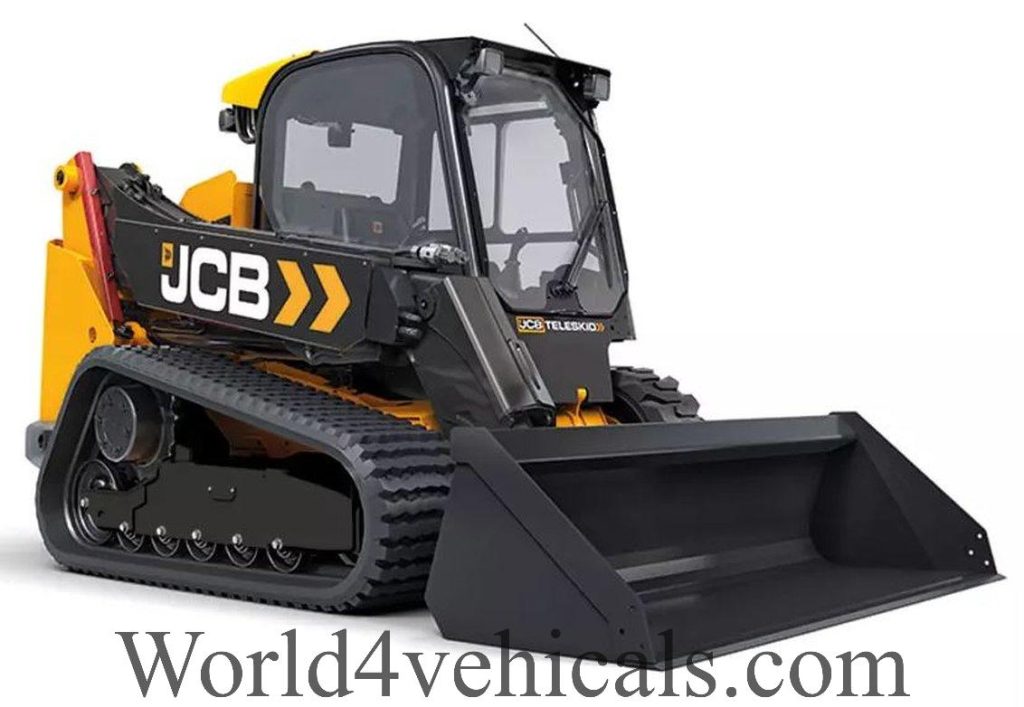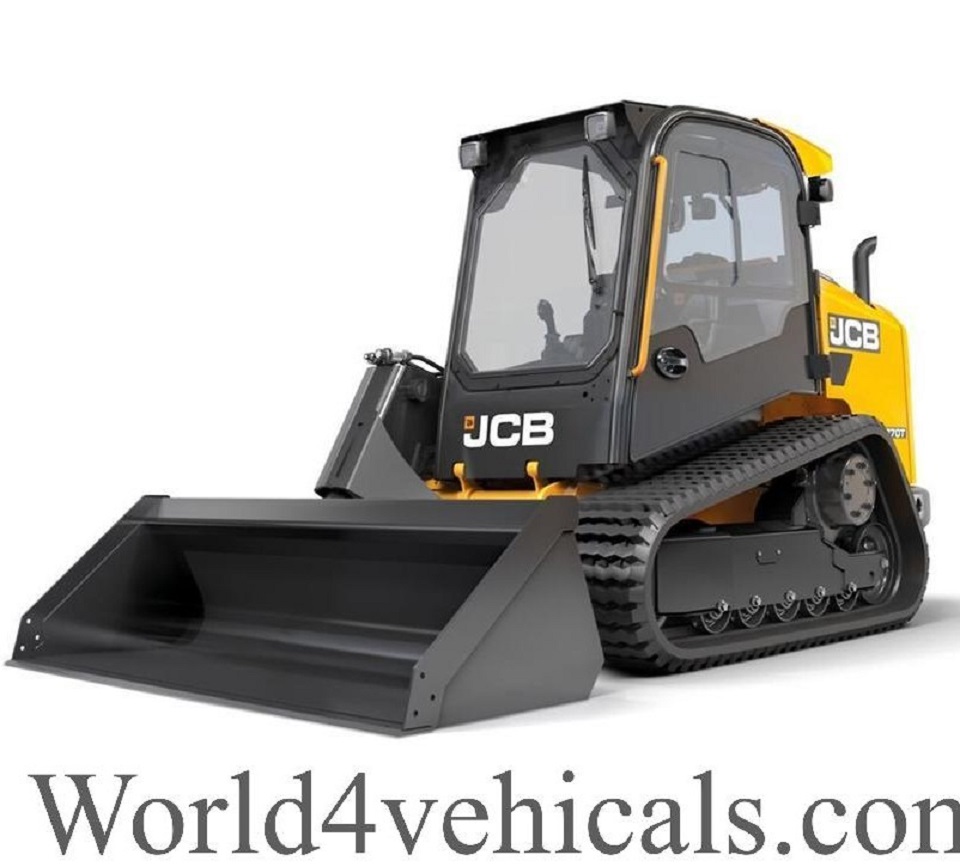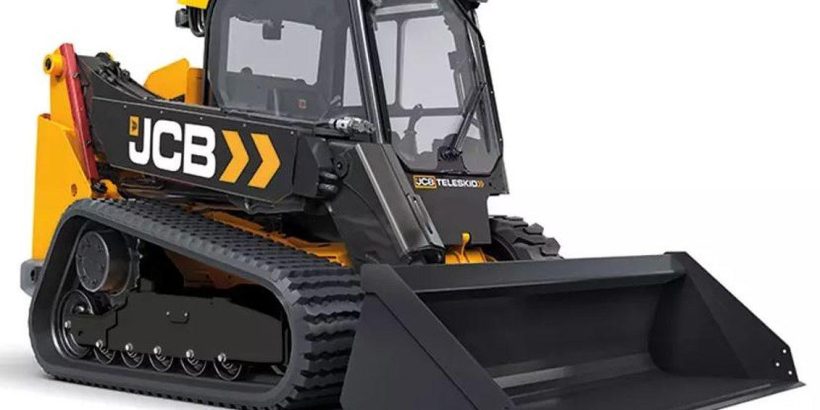Introduction
JCB skid steers represent a pinnacle of engineering in the compact machinery sector, offering a blend of power, safety, and efficiency. These machines are indispensable across various industries, including construction, agriculture, and industrial operations. Their unique design, characterized by a single-arm Powerboom and side-entry door, sets them apart from traditional skid steers, enhancing both operator safety and machine performance. This article delves into the technical specifications, functional advantages, and industry applications of JCB skid steers while exploring their economic and environmental impact.

Engineering and Design Innovations
JCB skid steers integrate cutting-edge engineering solutions to optimize performance and safety. Several key innovations contribute to their superiority:
1. Single-Arm Powerboom Technology
JCB has replaced the conventional twin-lift arm design with a single-arm Powerboom structure. This innovation not only increases visibility but also enhances structural integrity and lifting capacity by distributing forces more efficiently across the machine. The reinforced steel construction ensures longevity and resistance to mechanical stress, reducing the likelihood of operational failures.
2. Side-Entry Cabin Design
Unlike traditional front-entry designs that require operators to climb over attachments, JCB skid steers feature a side-entry door. This minimizes the risk of injury and improves accessibility, particularly in confined work environments. The design also allows for easier ingress and egress, reducing operator fatigue and improving productivity in long shifts.
3. Efficient Diesel Engine Systems
JCB skid steers are powered by high-torque diesel engines designed to comply with stringent environmental regulations. These engines offer optimal fuel efficiency, reduced emissions, and consistent high performance under load. The integration of Tier 4 Final and EU Stage V compliant engines ensures that the machines meet global sustainability standards while maintaining powerful output.
4. Precision Hydraulic Control
The advanced hydraulic system in JCB skid steers ensures smooth operation of attachments, facilitating high-precision tasks such as grading, drilling, and lifting. The system provides operators with responsive and intuitive control, minimizing energy loss and maximizing efficiency. The high-flow hydraulic option further enhances the ability to power demanding attachments such as hydraulic hammers and trenchers.
5. Compact Maneuverability
With an optimized turning radius and ergonomic control layout, JCB skid steers excel in confined and complex workspaces. Their agility makes them particularly effective in urban construction and small-scale agricultural operations. The robust suspension system and improved wheelbase design allow for superior stability and traction in challenging terrain.
6. Operator Comfort and Ergonomics
JCB prioritizes operator comfort with a spacious, pressurized cabin that reduces noise, dust, and vibrations. The ergonomic control system and intuitive interface enhance usability, reducing operator fatigue during prolonged operations. The inclusion of climate control, adjustable seating, and digital displays further elevates operator convenience and efficiency.
7. Attachment Versatility
JCB skid steers are compatible with a diverse range of attachments, including augers, trenchers, grapples, snow pushers, and pallet forks. This adaptability enables seamless transitions between tasks, enhancing operational efficiency and cost-effectiveness. Quick-hitch systems ensure easy attachment swapping, reducing downtime between tasks.
Industrial Applications of JCB Skid Steers
Owing to their robust design and multifunctionality, JCB skid steers are employed in diverse industries:
1. Construction Engineering
JCB skid steers facilitate material handling, excavation, site preparation, and debris clearance, making them an integral component of modern construction sites. Their ability to navigate restricted spaces allows for efficient work in high-density urban projects.
2. Agricultural Operations
Farmers utilize these machines for soil management, livestock feeding, barn maintenance, and hay transportation, significantly improving efficiency and labor productivity. The ability to operate with attachments such as bale spears and silage defacers expands their utility in the agricultural sector.
3. Landscaping and Environmental Management
Landscapers rely on JCB skid steers for terrain grading, trenching, and planting, as well as for the installation of hardscape elements such as retaining walls and drainage systems. Their ability to transport soil and debris with precision makes them invaluable for detailed landscaping projects.
4. Infrastructure Maintenance and Roadwork
Municipal and governmental agencies deploy JCB skid steers for snow removal, asphalt patching, and roadside vegetation management, ensuring infrastructure upkeep with minimal labor input. Their compact size allows for seamless integration into urban maintenance fleets.
5. Logistics and Warehouse Operations
In industrial environments, JCB skid steers assist in warehouse management by handling pallets, loading trucks, and organizing storage facilities efficiently. Their precise maneuvering capabilities make them a suitable alternative to traditional forklifts in confined warehouse settings.
6. Demolition and Waste Management
JCB skid steers play a critical role in demolition projects, where they help remove debris and transport heavy materials efficiently. Their reinforced design allows them to withstand the impact forces associated with deconstruction tasks.
Advantages of JCB Skid Steers Over Competitors
1. Enhanced Safety Standards
JCB skid steers integrate superior safety features, such as enhanced visibility, side-entry doors, and ergonomic control systems, reducing operational hazards significantly. The cab-forward design ensures a clear line of sight, minimizing blind spots.
2. Durability and Longevity
Constructed with high-grade materials and engineered for rigorous use, JCB skid steers exhibit exceptional durability, reducing downtime and maintenance costs. Their rugged undercarriage and impact-resistant hydraulic systems contribute to prolonged service life.
3. Fuel and Energy Efficiency
With advanced diesel engines optimized for low emissions and high fuel economy, JCB skid steers offer a cost-effective solution for long-term operation. The regenerative braking system helps improve fuel efficiency and reduces overall operational expenses.
4. Intuitive User Interface
Operators benefit from an intelligently designed control system that facilitates ease of use, reducing the learning curve for new users and enhancing productivity for experienced professionals. The digital dashboard provides real-time machine diagnostics, improving maintenance planning.
5. Lower Maintenance Requirements
JCB skid steers incorporate an innovative design that minimizes grease points and extends service intervals, significantly reducing routine maintenance demands. The easily accessible engine bay and centralized lubrication points simplify serviceability.

Economic and Environmental Considerations
JCB skid steers are designed with sustainability and cost efficiency in mind. The fuel-efficient engines reduce carbon emissions, contributing to eco-friendly operations. Additionally, the use of biodegradable hydraulic fluids minimizes environmental impact, making JCB machines a preferred choice for green construction initiatives.
From an economic perspective, the longevity and reliability of JCB skid steers ensure a high return on investment. Their versatility reduces the need for multiple specialized machines, cutting overall equipment costs for businesses.
Considerations When Selecting a JCB Skid Steer
When choosing a JCB skid steer, several factors should be taken into account:
- Engine Power and Performance: Select a model that aligns with the specific power requirements of your operational needs.
- Load and Lift Capacity: Evaluate the weight-handling capabilities to ensure suitability for your intended applications.
- Attachment Compatibility: Ensure the machine supports the necessary attachments for your industry-specific tasks.
- Terrain and Worksite Conditions: Determine whether a wheeled or tracked model is more appropriate based on the environmental demands of the worksite.
- Budget and Lifecycle Costs: Consider both initial acquisition costs and long-term operational expenses to maximize investment value.
Conclusion
JCB skid steers exemplify a fusion of innovative engineering, safety, and operational efficiency. Their advanced features, adaptability across industries, and cost-effectiveness make them a valuable asset for various sectors. Whether in construction, agriculture, or logistics, JCB continues to set industry benchmarks in skid steer technology.
For professionals seeking a reliable and cost-effective skid steer solution, JCB offers a compelling choice backed by cutting-edge engineering and a commitment to performance excellence. Explore JCB’s diverse model range to find the ideal machine that aligns with your operational demands and productivity goals.
